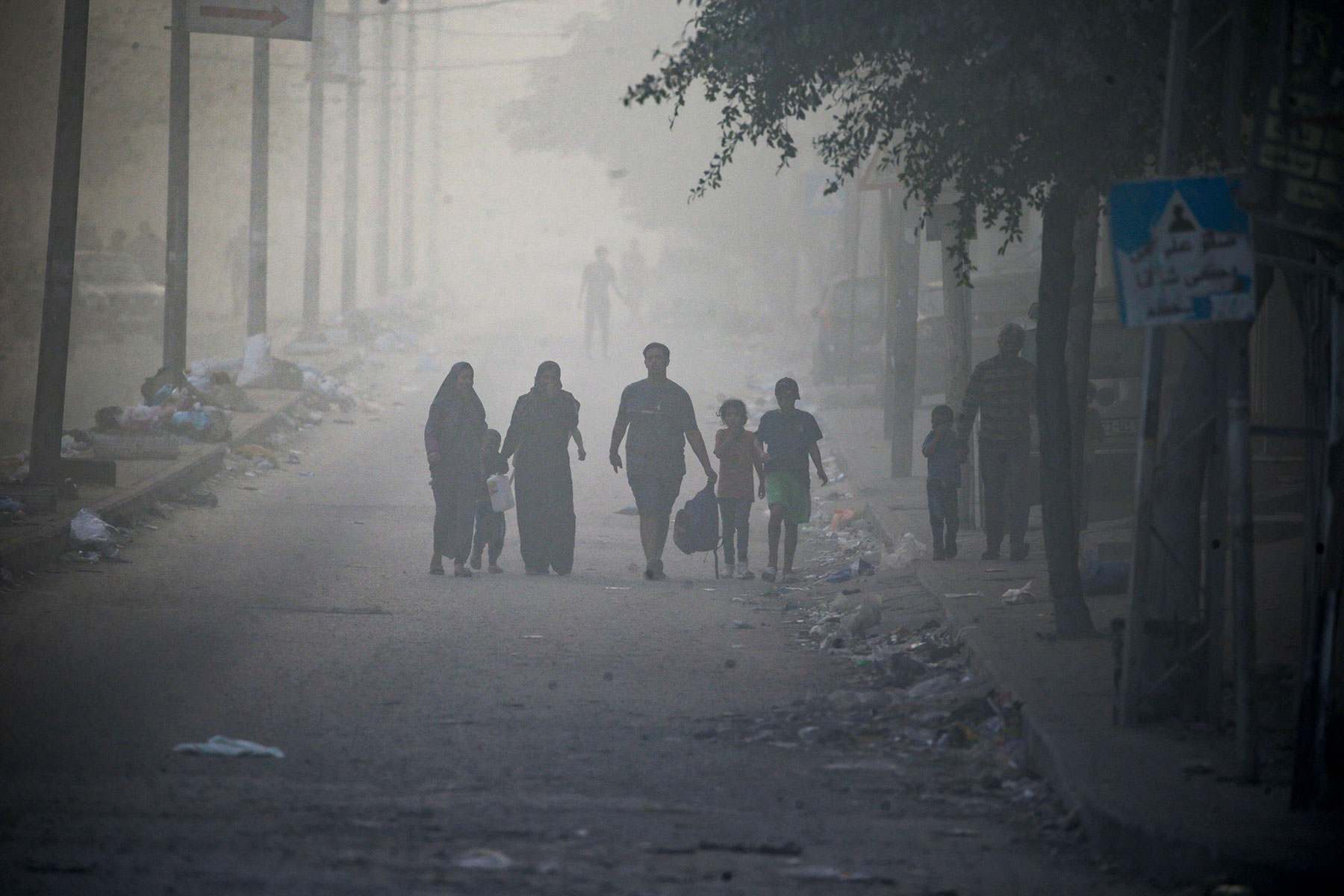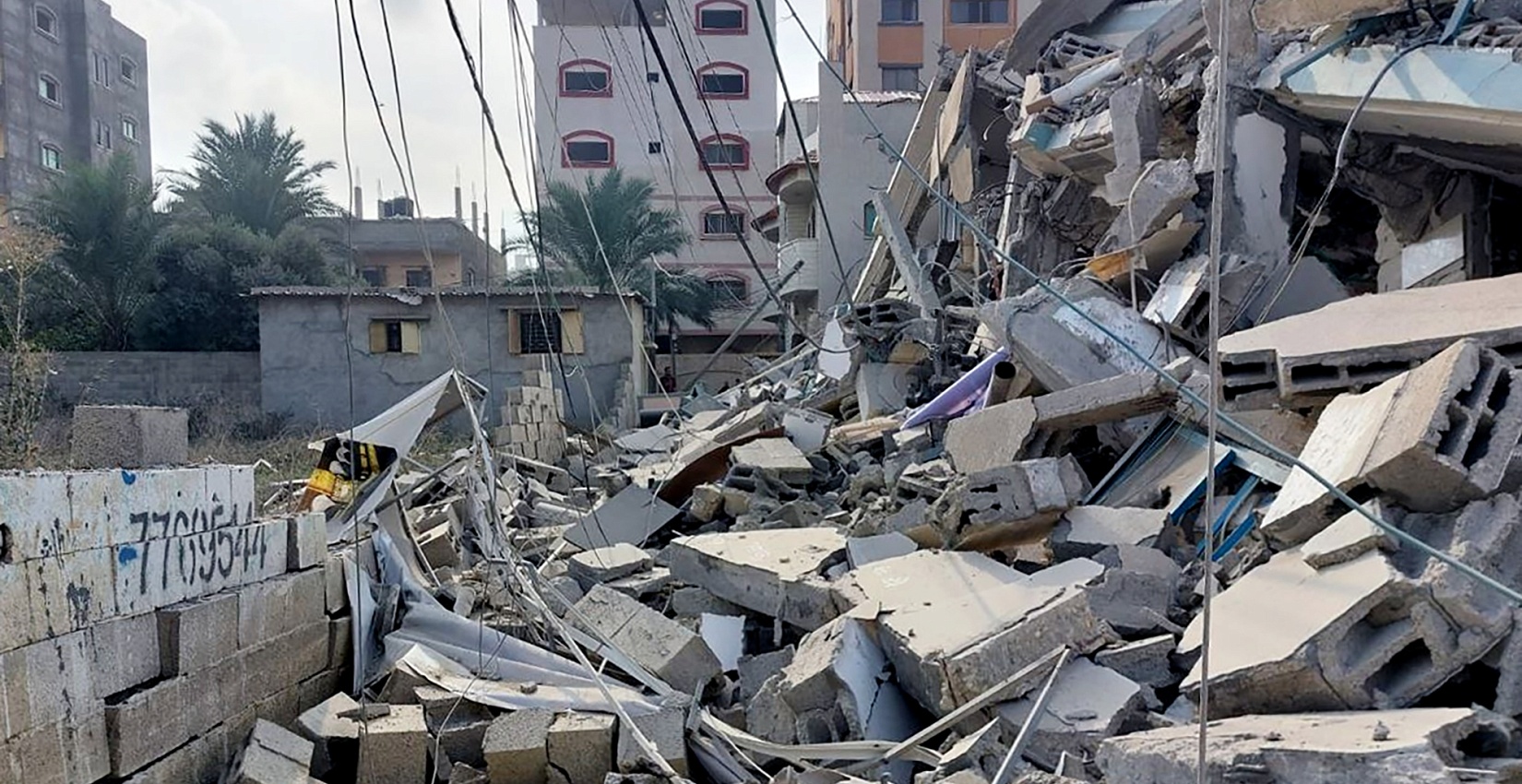The world has seen that the U.S., together with Israel and other Western nations, tried to construct Palestine issue as a part of global fight against terrorism, and particularly Hamas as a terrorist organization. The latest such construction is that they describe the conflict between Israel and Palestine as that between Israel and Hamas, which intentionally suggests that Israel has been fighting against terrorism.
That is an apparent distortion of the nature of conflict between Israel and Palestine. Despite various aspects of the conflict, the nature of the tension between Israel and Palestine is primarily defined by occupation and opposition to occupation. Where there is occupation, there is opposition. The opposition could always be there so long as Palestinians do not have meaningful control of their own territories, and the region and the world will not be able to see peace.
The recent Palestine-Israel conflict has attracted global attention, but that does not necessarily collect the efforts of the world for the solution of the problem. If the world does not want to pay a bigger price, they will have to push for a negotiated solution as soon as possible. History will finally prove that absence of solution could be even more detrimental to Israel more than any other else.
All in all, none will benefit from the bloody conflict. Instead, regional and extra-regional countries, alongside the two sides of Palestine and Israel, had paid a sufficient cost for the conflict. Deviation from the original nature of the problem as well as from the right track of a two-state solution could contain the crisis for some time—this, however, can never hide the real problem. It is time the issue be brought back to the right track.
The current conflict between Israel and Palestine has shocked the world. Although the conflict was triggered by the October 7 attack of Hamas, the rationale behind the conflict lies, in fact, in the desperation of Palestinians. For a rather long time, the Palestine issue had been deviated away from the right track because of the long negligence of the international community and the intentional reconstruction of Middle East agendas of the U.S. and the West.
The international community should urgently embark on a collective effort to relieve the tense humanitarian needs and pressurize the relevant parties to provide conveniences for such purpose. While addressing the urgency, regional and external actors at stake should enhance cooperation to bring back Palestine issue to the right track. Indeed, the world has paid more than enough for the crisis and tragedy.
First, the world needs to bring the Palestine issue back to its original nature. The world has seen that the U.S., together with Israel and other Western nations, tried to construct Palestine issue as a part of global fight against terrorism, and particularly Hamas as a terrorist organization. The latest such construction is that they describe the conflict between Israel and Palestine as that between Israel and Hamas, which intentionally suggests that Israel has been fighting against terrorism.
That is an apparent distortion of the nature of conflict between Israel and Palestine. Despite various aspects of the conflict, the nature of the tension between Israel and Palestine is primarily defined by occupation and opposition to occupation. Not only did Israel occupy a large proportion of the territories designated by UN Generally Assembly resolution No. 181 in 1947 and UN Security Council Resolution No. 242 in 1967, but also fragmented Palestine territories by building settlements, circumventing the territories with walls and checkpoints. The recent years have even seen Israelis destroy houses of Palestinians by bulldozers. Israel does have legitimate rights to defend itself. But such rights should never go beyond the border defined by UN Resolutions 181 and 242 as mentioned.
The U.S. could have taken measures to stop Israel from occupying Palestine territories. On the contrary, U.S. Trump Administration recognized Jerusalem as Israel’s capital by moving the U.S. embassy from Tel Aviv to Jerusalem, and even officially recognized Israel’s annexation of the territories as legal in 2019.
Where there is occupation, there is opposition. The opposition could always be there so long as Palestinians do not have meaningful control of their own territories, and the region and the world will not be able to see peace. While addressing the most urgent issues, the world will have to reestablish consensus of occupation as the original nature of Palestine issue, which, though intentionally distorted, was always there. Only when the nature of tension is clearly defined can the root cause of the problem be addressed.
Second, the world needs to bring back the Palestine issue to the core of Middle East agendas. The Palestine issue was essentially sidelined for decades. While regional and international actors were directing their attention on other regional issues, the miseries of Palestinians were not sufficiently attended. America’s pushing for and some Arab countries’ accepting of the Abraham Process are both the manifestation of above-mentioned trends.
However, just as China frequently states on the official level, the Palestine issue remains at the core of Middle East agendas, and is the root cause of various Middle East problems. People of Palestine cherish their legitimate cause of nationhood; the legitimate cause of the Palestinians resonates with the people of Arab and muslin countries, and their demonstrations in the streets are relevant with the internal stabilities of these countries. People across the world, whether West or non-West, are well aware of the justice deficit in the issue as recent demonstrations took place in cities across the world.
The recent Palestine-Israel conflict has attracted global attention, but that does not necessarily collect the efforts of the world for the solution of the problem. Only when the world brings back the issue to the core of regional agendas, will sufficient attention be put on and sufficient resources be invested in addressing the issue, and will the problems be finally resolved. Therefore, the most important should be that major actors work together to make the issue a priority of regional agendas.
Third, the world needs to bring back Palestine issue to the right track of two-state solution by negotiation. There used to be efforts to negotiate a two-state solution for the problem. But unfortunately, since the roadmap of Bush Administration in 2002, there had not been meaningful negotiation between the two. The reasons partly lied in the overwhelming agendas of fighting against terrorism and later pushing forward the Abraham Process, but fundamentally lied in Israel’s reluctance to give up on what it had taken.
History suggests that the stalling of negotiation could make the problem itself bigger and bigger, and more and more complicated. In 1949, on the cusp of the first Middle East war, the number of refugees amounted to hundreds of thousands. But in the year 2023, the number of people plighted amounted to more than 13 million, including more than 5 million people living in the West Bank and Gaza Strip while another 8 million live as refugees in the neighboring countries. With more territories annexed, it could be even more difficult for Palestinians to get back their legal territories.
The flowing of time does not necessarily solve the problem but makes the challenge ahead even tougher. The current conflict between Israel and Palestine suggested that the problem had reached new severity. With the absence of foreseeable negotiated two-state solution, the tension could further develop into another new level as people could ask what the next destinations of those people are driven away from their homes, and their desperation could even grow. And the tensions could grow even more fierce.
The world will have to deliver the negotiated solution as soon as possible. Today’s bigger problem is an outcome of yesterday’s negligence, and tomorrow’s even bigger problem will be the outcome of today’s inaction. If the world does not want to pay a bigger price, they will have to push for a negotiated solution as soon as possible. History will finally prove that absence of solution could be even more detrimental to Israel more than any other else.
All in all, none will benefit from the bloody conflict. Instead, regional and extra-regional countries, alongside the two sides of Palestine and Israel, had paid a sufficient cost for the conflict. Deviation from the original nature of the problem as well as from the right track of a two-state solution could contain the crisis for some time—this, however, can never hide the real problem. It is time the issue be brought back to the right track.






